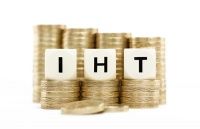 Inheritance tax (IHT) receipts for April to December 2024 are £6.3bn, which is £600m higher than last year, continuing the “strong” upward trajectory seen over the past few years.
Inheritance tax (IHT) receipts for April to December 2024 are £6.3bn, which is £600m higher than last year, continuing the “strong” upward trajectory seen over the past few years.
The current £325,000 nil-rate band has been at that level since 2009.
The residential nil-rate band was introduced on a phased basis between 2017 and 2020 and potentially gives an additional £175,000 nil-rate band, making a total of £500,000, subject to certain rules.
The Office for Budget Responsibility expects these numbers to continue rising as shown in the table below.
| Year | 2023/24 | Expected 2024/25 | Projected 2029/30 |
| TOTAL £ | 7.4bn | 8.3bn | 13.9bn |
| Increase | £0.9bn | £5.6bn |
Source: Economic and fiscal outlook – CP 1169
Shaun Moore, tax and financial planning expert at Quilter, said the “relentless rise” is “no coincidence”.
“With inheritance tax thresholds frozen until 2030, more families are being pulled into the scope of IHT, and this trend shows no signs of slowing,” he said.
“Add to that the significant changes coming in April 2027, when pensions will be drawn into taxable estates and the government looks set to cash in on an ever-expanding pool of taxpayers.
“Farming families, too, could face tougher times as reductions to agricultural property relief start to bite, potentially forcing some to make difficult decisions about the future of their farms.
“Meanwhile, tweaks to business relief and AIM share rules are also likely to keep boosting HMRC’s coffers in the years ahead.”
IHT receipts on track for ‘another record-breaking year’
Nucleus technical services director Andrew Tully added: “IHT receipts continue to grow strongly, with the OBR suggesting ongoing increases will continue over the next few years.
“OBR’s £8.3bn estimate for full year 2024/25 would be a 10.7% increase from last year.
“It suggests receipts will increase further in the years to come due to recent policy changes, including limits to agricultural and business reliefs and extending the freeze in nil-rate bands to 2029/30.
“The government’s consultation to include pensions within the estate for IHT purposes from April 2027 closes today, and if that change proceeds it will help drive this further growth.
“OBR predict receipts will be nearly £14bn by 2029/30, around double the amount raised in 2022/23.”
Tully suggested advisers can help clients mitigate these taxes by setting up trusts and making use of gift allowances and the spousal exemption.
Additionally, equalising assets between spouses and civil partners, and making use of the “no gain no loss” disposal, could mean all exemptions can be utilised and household income increased if there is a disparity in the rates of tax each spouse pays.















A most interesting article… not only has IHT take risen relentlessly over last 15 years… the take is accellerating quickly too…
Yet… there are structures available which offer both instant relief – vs say Business Releief at 2 years minimum and continuously held until death – and a good long term investment for offspring and grand offspring.
Since the assault upon farming and SMEs… JC Bamford can’t sell a digger with only 80% of the parts fitted.. come on! Whatever next?… As for farms – surely something is bought as a business if it is being operated as a business – non?
Nevertheless… CV Reeves/Max headroom hope to collect both removed personal allowances on first million as even modest farms will be scrap land valued at £3M+; and CGT as they have to be (partly) sold off…
I am seeing farmers – I am a bucolic soul after all – over the next weeks who have around 16,000 acres between them… not all can grow wild flowers or create peat bogs… so an instant solution with write back value, but almost zero value in early years will do just fine…
One area not mentioned (that I have heard) is hotels or similar! Just how do you split one of these unless a share structure can be partly sold?
Finally, profit is not level or linear, often it is the whole which creates profit… 80% might not be enough.